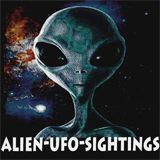The Revealing Truth of Ufos, Secret Aircraft, Cover-Ups & Conspiracies: Area 51
In the early 1990s, rumors began to circulate among the aviation world that a highly secret, futuristic aircraft was being flown out of Area 51 under distinctly covert circumstances. The reportedly large, black-colored, triangular- shaped aircraft could fly at incredible speeds and outmaneuver just about anything else on the planet. It was rumored to be known as the Aurora.
Officially, at least, and according to the U.S. government, the Aurora does not exist and has never existed, but then again, that was once said about Area 51, too, so with that in mind, we need to tread cautiously when it comes to official proclamations of the controversial type.
The story began—publicly, at least—in March 1990. That was when the well-respected magazine Aviation Week and Space Technology covered the story. They revealed that the term “Aurora” had appeared in the 1985 U.S. budget—and had possibly appeared by mistake, which makes sense if the program was so highly sensitive that its existence had to be denied at all costs, and speaking of costs, it was rumored that around $455 million had been provided to those working out at Area 51 on secret, futuristic aircraft. AW&ST suspected that Aurora was a code name for multiple kinds of aircraft that were radical in both design and technology. Other investigators, though, concluded that Aurora referred to just one type of aircraft. AW&ST learned that by 1987, the budget had soared to in excess of $2 billion.
Bill Sweetman is one of the leading figures in the field of aviation and someone who took a deep interest in the Aurora saga. His books include F-22 Raptor, Inside the Stealth Bomber, and Soviet Air Power. In his 1993 book, Aurora: The Pentagon’s Secret Hypersonic Spyplane, Sweetman says: “Does Aurora exist? Years of pursuit have led me to believe that, yes, Aurora is most likely in active development, spurred on by recent advances that have allowed technology to catch up with the ambition that launched the program a generation ago.”
This was all very interesting for those who follow the world of exotic aircraft, such as Bill Sweetman and the staff of Aviation Week and Space Technology—and it still is of interest to them—but where was the evidence for the existence of the Aurora? Did any evidence exist? Yes, it did, and it came from a highly credible man with an impeccable background. His name is Chris Gibson.
It was in the summer of 1989 that Chris Gibson had what can accurately be termed the encounter of a lifetime. An engineer with an honors degree in geology and someone whose work focused on oil exploration, Gibson was also attached to the United Kingdom’s Royal Observer Corps. The work of the ROC —which closed down in December 1995 after seventy years of work to help protect the United Kingdom from attack—required its volunteers to keep a careful watch on the skies above and what was flying in those same skies, too.
As luck—or fate—would have it, and at the time when the Aurora program may very well have been compromised, Gibson was working on an oil rig in the North Sea. The name of the rig was the Galveston Key. It was August 1989, specifically, when one of Gibson’s colleagues, a friend named Graeme Winton who went to university with Gibson, excitedly told Gibson to come with him to the deck. Winton needed to show him something.
A startled and amazed Gibson caught sight of something incredible in the skies above. A pair of General Dynamics’s F1-11 aircraft were shepherding a very strange-looking, completely black aircraft, and a Boeing KC-135 Stratotanker seemed to be fueling it. It was in the form of a triangle. For a moment or two, Gibson pondered on the possibility that what he and Winton were seeing was the F-117 stealth fighter, but the design was clearly wrong, and the aircraft was significantly larger than the stealth fighter. Gibson knew this, as
the four aircraft were not flying high; in fact, they were fairly low. Gibson was completely and utterly stumped by the strange appearance of the plane. It was something he had never seen before.
